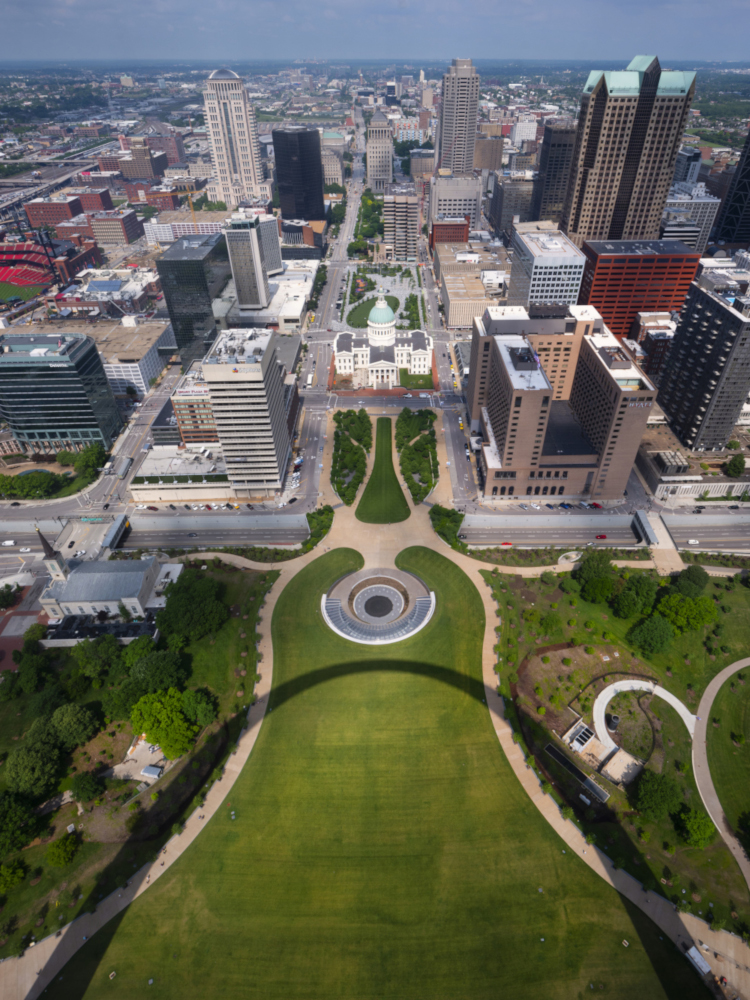In the past, architecture symbolised man’s struggle with overcoming structural and technological challenges that the landscape presented. Today, we are starting to see something quite different: buildings where the relationship to nature and the ground is much more subtle.
This is an adapted translation originally written by Nora Santonastaso
.jpg)
The Burj Khalifa skyscraper in Dubai where the central core forms a spire at its pinnacle, measures an incredible 829.8 metres. This building holds the record for the tallest building in the world.
The relationship between buildings and the landscape is present and missing at one and the same time and while this near invisibility may seem like something of a paradox, some historical context is helpful. In ancient times architecture was simply a means of transforming land into somewhere for humans to live together, providing a roof over our heads and walls around us to shelter from the elements.
Over time, our need for shelter has become more sophisticated and architecture has become more complex as a result: dimensions of buildings have changed and their characteristics have become more refined. More recently, there have been no shortage of buildings that have pushed the structural and technological limits of their surroundings. The Burj Khalifa by SOM Architects springs to mind which rises up with a spire at its pinnacle, measuring a total of 829.8 metres, towering over Dubai and holding the world record for being the tallest building in the world.
.jpg)
The relationship between architecture and its location is exemplified here by the Antinori Winery, a project by Archea Associati. The project was inaugurated in 2012.
© Photo: Nora Santonastaso / design outfit
If we travel to the Chianti Classico area of Tuscany, we find another example of an unusual building this time in harmony with its surroundings. This is the headquarters of Antinori Marquises, a 26th-generation winemaker which has called this area home since 1385 when Giovanni di Pietro Antinori joined the Florentine Guild of Winemakers. Some six centuries later, on October 25th 2012, the new winery and its cellars were inaugurated. Designed by Archea Associati, the building almost seems to disappear into the soft slopes of the hillside. It spans multiple floors with a total area of 39,700 square metres.
Visitors ascend up to the roof of the structure through a large, helical staircase and the architectural structure of the winery merges with its rural location. The building’s edges flow seamlessly in an irregular yet smooth pattern that echoes the green slopes of the hills on which it sits. The Antinori winery seems to almost disappear into the landscape when viewed from above.
.jpg)
The Plus, designed by Bjarke Ingels, will be the new home of a new factory for Vestre, located in a Norwegian forest.
© Render: Bjarke Ingels Group (BIG)
Bjarke Ingels Group (BIG) has designed The Plus, a new production plant for Vestre, an eco-friendly Norwegian furniture brand. Set within dense forest, the design of the building seeks to embody the sustainable values of Vestre. It is also intended to completely blend into surroundings, in contrast to many other industrial facilities. The building features simple, transparent diaphragm structures inserted in several places, allowing nature to quite literally enter the building. In a clever bit of recycling, the raw materials that were used for the plant were the very trees that were cut down to make space for it.

The new Gateway Arch Museum in St. Louis contrasts an underground building with a tall, slender structure, integrating the two meanings of architecture.
© Photo: Nic Lehoux
The museum that lies at the foot of the Gateway Arch in St Louis has recently reopened to the public after a complete renovation. The Gateway Arch Museum is dedicated to the city’s internationally renowned architectural symbol, designed by Finnish architect Eero Saarinen in 1947. A slender concrete structure, it stretches 192 metres high and represents the triumph over the structural and technological constraints within architecture. At the same time, it is a highly visible counterpoint to the underground architecture of the extension to the museum, designed by the James Carpenter Design Associates.
The new entrance to the exhibition space is found at a lower level than the park in which it is set. A long walkway, designed to accommodate visitors with restricted mobility, also plays an important complementary role: drawing the curvilinear shape of the canopy that protects the entrance of the museum in, therefore hiding it from the view of the potentially distracted visitor.